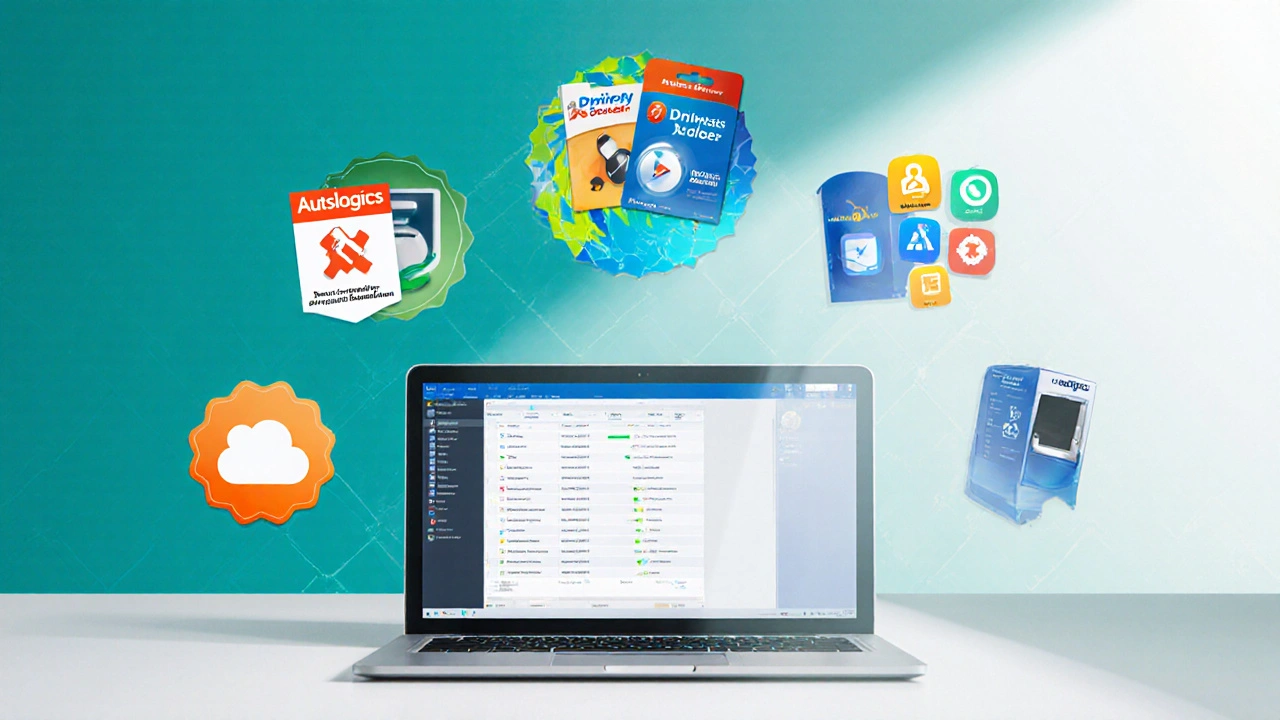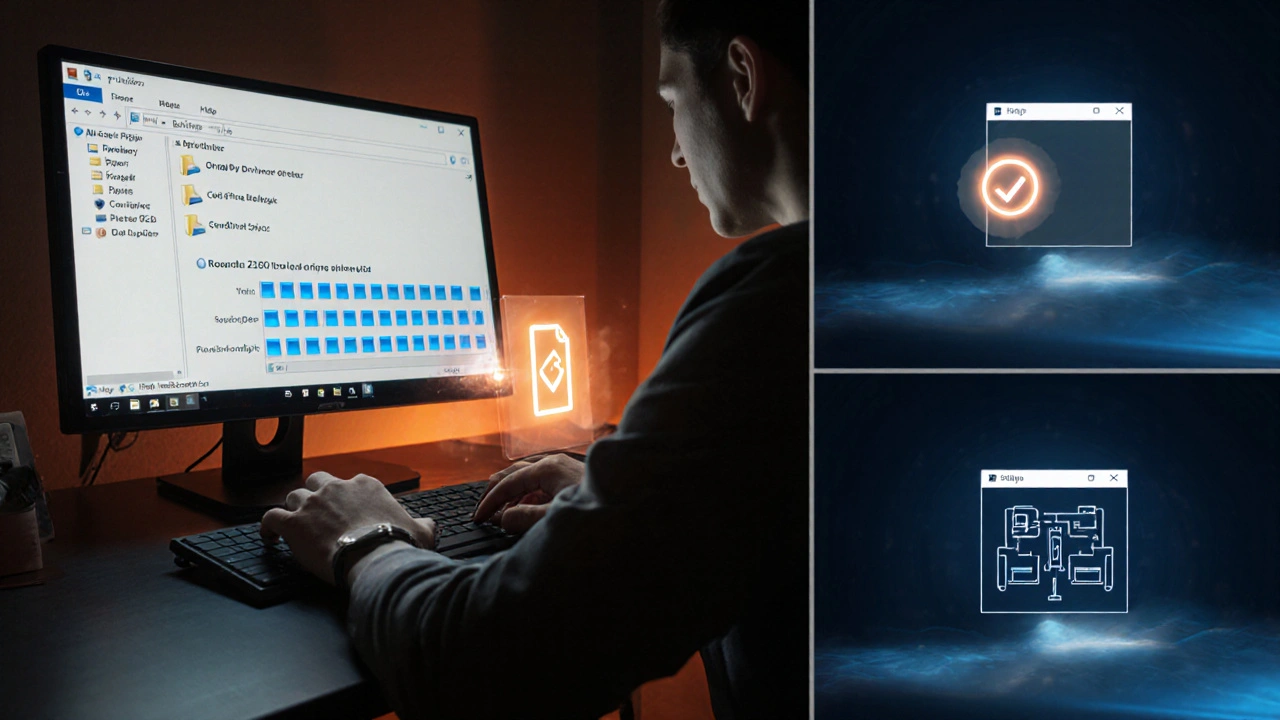Best Free Driver Updater Tools for 2025 - Top Picks and How to Use Them
 Oct, 5 2025
Oct, 5 2025
Driver Updater Safety Checker
Filter Tools
Recommended Tools
Apply filters to see matching tools
Keeping your PC’s hardware talking to Windows can feel like a never‑ending chore, especially when you’re juggling work, streaming, and gaming. The right driver makes everything run smoother, but hunting down the latest version for each component is a pain. That’s where a best free driver solution comes in - a program that scans, finds, and installs the right files without costing you a penny.
What an Updater Actually Does
Before you download any tool, it helps to know the basics. A driver updater scans the hardware IDs in your system, matches them against a database of certified drivers, and offers a one‑click install. It’s not magic; it simply automates what you’d do manually in Device Manager or on a manufacturer’s website. The biggest advantages are speed, reduced human error, and the chance to fix obscure bugs that only appear after a Windows update.
Top Free Driver Updater Tools in 2025
The market is crowded, but a handful of programs consistently rank high for safety, database size, and ease of use.
- Snappy Driver Installer is an open‑source driver pack that lets you download a full offline repository or run a lightweight online scan. It never pushes ads and lets you export a custom driver bundle for multiple PCs.
- Driver Booster Free offers a slick UI, a 1‑click update button, and a community‑verified driver database. The free version shows ads, but it never forces installations you didn’t ask for.
- Driver Easy Free provides automatic scanning and a simple download manager. While the free tier requires manual installation of each driver, it’s a solid option for users who want full control.
- Auslogics Driver Updater Free focuses on stability, offering a curated list of verified drivers. The free edition limits you to three updates per day, which is enough for most home PCs.
- DriverPack Solution bundles a massive offline driver collection, perfect for technicians who need to work without internet access. Its automated installer can handle hundreds of devices at once.
- Windows Update is often overlooked but still delivers essential driver patches directly from Microsoft. It’s safe, but its catalog is smaller than dedicated tools.
- Device Manager is built into Windows and lets you manually search for driver updates. It’s free by default, though it requires you to click through each device individually.

Feature Comparison Table
| Tool | Database Size | Offline Mode | Ads / Upsell | Auto‑Install | Safety Rating |
|---|---|---|---|---|---|
| Snappy Driver Installer | ~ 250,000 drivers | Yes (full pack) | No | Optional | ★★★★★ |
| Driver Booster Free | ~ 180,000 drivers | Partial (online) | Yes (banner) | Yes (1‑click) | ★★★★☆ |
| Driver Easy Free | ~ 120,000 drivers | No | Yes (pop‑up) | Manual | ★★★★☆ |
| Auslogics Free | ~ 100,000 drivers | Partial | Yes (limited updates) | Yes (auto) | ★★★☆☆ |
| DriverPack Solution | ~ 300,000 drivers | Full | No | Optional | ★★★★★ |
| Windows Update | ~ 60,000 drivers | No | No | Yes (auto) | ★★★★★ |
| Device Manager | Limited to installed hardware | No | No | Manual | ★★★★☆ |
How to Choose a Safe Free Driver Tool
Not all free utilities are created equal. Follow these quick checks before you hit “Download”.
- Verify the vendor’s reputation - look for a clear privacy policy and no hidden malware reports.
- Check the driver database source - reputable tools pull from manufacturer‑approved archives, not obscure third‑party sites.
- Watch for bundled software - a clean installer should not sneak in toolbars, browser extensions, or unwanted antiviruses.
- Prefer offline capability - if you ever need to update a PC without internet, a downloadable driver pack saves a lot of hassle.
- Read user reviews posted after the latest Windows 11 update - this tells you whether the tool still works with the newest OS changes.
Step‑By‑Step: Updating Drivers with Snappy Driver Installer
Snappy Driver Installer (SDI) is my go‑to because it’s open‑source, ad‑free, and works offline. Here’s a quick workflow you can follow.
- Download the latest SDI ZIP from the official site.
- Extract the folder to a location with enough free space (a 3GB drive is enough for the full pack).
- Run
SDI Lite.exe. The program will open a simple UI showing “Scan” and “Install”. - Click Scan. SDI reads every hardware ID and cross‑references its internal catalog.
- After the scan, you’ll see a list of outdated drivers highlighted in red. Tick the ones you want - you can select “All” if you trust the catalog.
- Hit Install. SDI backs up the current driver files, then copies the newer versions into the system folder.
- When the process finishes, reboot your computer. A quick check in Device Manager should show “This device is working properly”.
The whole routine takes under ten minutes for a typical home PC, and you get a clean, ad‑free driver set.

Common Pitfalls and How to Avoid Them
Even the best free tools can trip you up if you’re not careful.
- Blindly installing every suggestion. Some drivers are optional (e.g., a printer you never use). Installing unnecessary files can clutter the system and sometimes cause conflicts.
- Skipping the backup. Always let the updater create a restore point or backup the existing driver folder. If a new driver misbehaves, you can roll back instantly.
- Ignoring Windows Compatibility. A driver built for Windows10 may not work perfectly on Windows11. Check the driver’s supported OS list before applying.
- Using outdated driver packs. Free tools often release new databases every few weeks. Make sure you download the latest version of the tool itself.
Quick Checklist Before You Press “Update”
- System restore point created?
- Driver source verified (manufacturer or reputable database)?
- Backup of current drivers saved?
- Compatibility with your Windows version confirmed?
- Unnecessary devices deselected?
If you answer “yes” to all, you’re good to go.
Frequently Asked Questions
Is it safe to use a free driver updater?
Yes, as long as you pick a reputable tool that pulls drivers directly from manufacturers and doesn’t bundle malware. Always create a system restore point before updating.
Do free tools update graphic card drivers?
Most of them do, but the driver version may lag behind the vendor’s own download page. If you need the bleeding‑edge GPU driver for gaming, grab it directly from NVIDIA, AMD, or Intel.
Can I use a driver updater on a laptop with manufacturer‑specific drivers?
Yes, but double‑check that the updater offers the OEM‑approved version (e.g., Dell, HP, Lenovo). Installing a generic driver can sometimes void warranty support.
Do I need an internet connection for offline driver packs?
No. Tools like Snappy Driver Installer and DriverPack Solution let you download a full repository once, then use it on any PC without internet access.
How often should I run a driver scan?
Every 1‑2 months is enough for most home users. If you’ve just installed new hardware or after a major Windows update, scan immediately.
